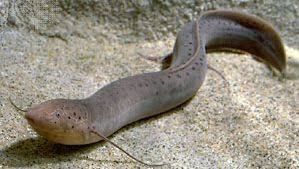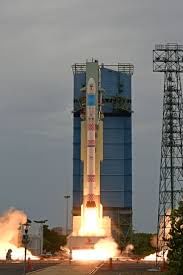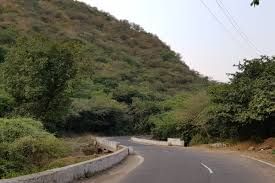UPSC Daily Current Affairs- 20 August 2024 | Current Affairs & Hindu Analysis: Daily, Weekly & Monthly PDF Download
GS2/International Relations
Court of Arbitration for Sport
Source: Hindustan Times

Why in News?
Recently, the Court of Arbitration for Sport (CAS) upheld Vinesh Phogat's disqualification from the Paris Olympics for exceeding the weight limit by 100 grams.
About Court of Arbitration for Sport:
- It was established in 1984 and operates under the administrative and financial control of the International Council of Arbitration for Sport (ICAS).
- It is a separate entity from any sports body and offers services to help resolve sports-related conflicts through arbitration or mediation using rules tailored to the sports industry.
- Functions:
- Its main role is to settle legal disputes in sports through arbitration.
- It issues arbitral decisions with the same legal force as court judgments.
- It can assist parties in resolving disputes amicably through mediation where applicable.
- It establishes temporary tribunals for events like the Olympics or the Commonwealth Games, with specific procedural rules for each event.
- Types of Disputes: Any disputes related to sports, whether commercial (like sponsorship agreements) or disciplinary (such as doping cases) can be brought before the CAS.
Who can refer a case to the CAS?
- Any person or company with the right to act can use the CAS services.
- These include players, teams, sports groups, hosts of sports events, sponsors, or TV companies.
GS3/Science and Technology
Hayflick limit
Source: Indian Express

Why in News?
Biomedical researcher Leonard Hayflick, who discovered that normal somatic cells can divide (and thus reproduce) only a certain number of times, died recently.
About Hayflick limit:
- It defines the maximum number of times a cell can split.
- Named after scientist Leonard Hayflick, who found this concept.
- The restriction is vital in aging and the onset of age-linked illnesses.
- Hayflick identified three stages that cells go through.
- In the initial phase involves swift, healthy cell division.
- In the second phase, cell division slows down.
- In the third stage, called senescence, cells cease dividing altogether.
- Even after stopping division, cells stay alive for a while. However, post division halt, cells undergo a unique process: essentially, they self-destruct.
- Upon reaching the end of their lifespan, cells undergo a predetermined cellular death known as apoptosis.
- Hayflick's finding gained more support when researchers in the 1970s uncovered Telomeres.
- Telomeres are repetitive DNA sequences situated at the very tip of these strands, designed to safeguard the chromosome.
- Significantly, with each cell split, these telomeres become slightly shorter. Eventually, the shortening leads to the cessation of cell division.
- While shortened telomeres are linked to aging, the exact connection between telomere length and lifespan remains uncertain.
GS3/Environment
Banni grasslands
Source: The Hindu

Why in News?
Recently, in a new study, researchers in Bhuj, have assessed the suitability of different areas of Banni for sustainable grassland restoration, considering ecological value to be the primary criterion.
About Banni Grasslands
- It is situated on the top border of Kachchh district in Gujarat.
- The Banni area is also the home of 22 different ethnic groups, most of whom are pastoralists.
- There is a wide variety of plant and animal life in Banni, including 37 types of grass, 275 bird species, and domesticated animals like Buffalo, Sheep, Goat, Horses, and Camels, as well as wild animals.
- The Banni Grasslands include the Kutch Desert Wildlife Sanctuary and Chhari Dhand Conservation Reserve.
- Flora: The plant life here is mainly made up of Prosopis Juliflora, Cressa critica, Cyperus spp, Sporobolus, Dichanthium, and Aristida.
- Fauna: The area is home to various mammals such as the Nilgai, Chinkara, Blackbuck, Wild boar, Golden Jackal, Indian Hare, Indian Wolf, Caracal, Asiatic Wildcat, and Desert Fox.
Key facts about Grasslands
- One of the biggest ecosystems worldwide.
- Found mainly in dry areas, including savannahs, grassy shrublands, and open grasslands.
- Ecological benefits: Home to many unique and well-known species. Provides various benefits to people like carbon storage, climate control, and pollination services.
- Threats: Facing degradation due to deforestation, overgrazing, agriculture, urbanization, and other natural or human causes. Nearly half of global grasslands are degrading.
- In India, grasslands cover around eight hundred thousand square kilometers, about a quarter of the country's total land area.
GS3/Environment
South American lungfish
Source: The Hindu

Why in News?
Recent study revealed that the South American lungfish genome grew massively during the past 100 million years.
About South American lungfish:
- It is a freshwater species known as Lepidosiren paradoxa.
- It is the closest living relative to the first land animals and closely resembles its ancient ancestors from over 400 million years ago.
- Distribution: It primarily lives in slow-moving and still waters across Brazil, Argentina, Peru, Colombia, Venezuela, French Guiana, and Paraguay.
- It possesses the largest genome of any known animal on Earth.
- The DNA in each cell of this lungfish would stretch about 60 meters, significantly longer than the human genome which would only extend 2 meters.
- Its genome is over 50 times larger than the human genome.
- There are four other lungfish species worldwide, found in Africa, also with notably large genomes.
- The majority of its genome is made up of repetitive elements, accounting for about 90% of its genetic material.
Key features of Lungfish
- Lungfish emerged in the Devonian Era.
- During the Devonian period, a crucial event happened: fish with lungs and strong fins evolved into the first tetrapods.
- Unlike most fish that use gills,lungfish have lung-like organs as well.
- They inhabit oxygen-poor, marshy areas in the Amazon and Parana-Paraguay River basins. To supplement the oxygen from water, they also breathe in air.
GS3/Economy
India need to create close to 8 million new jobs
Source: Indian Express

Why in News?
In the recently released Economic Survey, the Chief Economic Advisor estimated that India needed to create close to 8 million new jobs each year for the coming decade.
Status
- India has been among the top performers in terms of economic growth.
- India's growth numbers are very impressive.
- With a 7% growth rate this fiscal year, India stands out as the fastest growing major economy globally, contributing significantly to worldwide growth.
Main Challenges
- Inflation: Inflation is becoming steady but still requires careful handling to prevent negative impacts on the economy.
- Geopolitical Tensions: Disputes, especially in the Middle East, might influence prices of goods like oil.
- Political Uncertainty: Many elections worldwide this year could lead to uncertain policies affecting growth.
- Medium-Term Growth: Predicted global growth rates are low compared to past averages, prompting the need for fundamental changes.
- The dollar's dominance arises from the strength of U.S. institutions, accessible capital markets, and network impacts.
Impact of Artificial Intelligence (AI) on Employment
- About 25% of workers in India come into contact with AI.
- AI has varied effects on different job fields.
- AI can assist in dealing with skill shortages, improve government finances, and upgrade teaching techniques.
- Some areas, such as call centers, might experience a drop in the need for human workers due to AI.
Related steps
- Flexible inflation targeting has generally been effective worldwide by securing inflation expectations and enhancing credibility.
- India's Experience: Since embracing inflation targeting in 2015, India has observed more consistent inflation rates, although there are still obstacles to overcome.
- India is currently undergoing strong GDP expansion, making a significant contribution to global economic growth.
Suggestions and Way Forward
- Encouraging corporate investment and flexible labour markets can help a lot with overall growth and making more jobs.
- To improve business ease and reduce trade limits are very important.
- Focus on education, job skills, and increasing productivity in farming is crucial for long-term growth.
- It's beneficial for countries to have good financial stability, currency flexibility, and easy currency exchange, no matter if their money becomes powerful or not.
- By keeping on changing and improving things, India could keep growing and maybe grow even more, but making new jobs is very important.
- India must make between 60 to 148 million fresh jobs by 2030, needing growth across many different areas.
GS3/Agriculture
Andhra Pradesh Community-Managed Natural Farming (APCMNF)
Source: The Hindu

Why in News?
Recently, the Andhra Pradesh Community Managed Natural Farming (APCNF), a State government’s initiative launched through Rythu Sadhikara Samstha (RySS), has won the Portugal-based Gulbenkian Prize for Humanity (2024).
About the Andhra Pradesh Community-Managed Natural Farming (APCNF)
- Andhra Pradesh started a different way of farming in 2004, working with nature instead of using only chemicals.
- They moved from using a lot of chemicals to practices that help the environment, save money, and deal better with climate changes.
- At first, they began a project called AP Community-Managed Sustainable Agriculture with Women's Self-Help Groups (SHGs) all over the state.
- Basic principles are followed by APCNF, but the actual practices can be different depending on the area, farming history, and what the community knows.
- APCNF is not just about farming; it's a way to help the land heal itself.
- It tries to solve big problems farmers face like expensive chemicals, ruined soil, loss of plants and animals, and not enough water.
Core Success Factors
The core success factors that enable scale, replication, and sustenance are as follows:

Positive Impact
- Livelihoods: APCNF helps farmers by cutting costs and boosting yields.
- Climate Resilience: It's resilient to climate changes, crucial in today's shifting weather patterns.
- Food Security: People gain from better food and nutrition security.
- Environment: APCNF aids in environmental restoration and fights climate change.
GS3/Science and Technology
Small Satellite Launch Vehicle (SSLV)
Source: Indian Express

Why in News?
The Indian Space Research Organisation (ISRO) successfully launched the third developmental flight of the Small Satellite Launch Vehicle (SSLV) from the Satish Dhawan Space Centre.
About
- The SSLV-D3 successfully placed the Earth observation satellite EOS-08 into orbit.
- It signifies the conclusion of the SSLV Development Project by ISRO/Department of Space.
- NewSpace India Limited (NSIL), ISRO's commercial branch, along with India's private space sector, can now manufacture SSLVs for commercial space missions.
What is an SSLV?
- It's a three-part Rocket designed with three Solid Fuel Stages.
- It also includes a liquid fuel Velocity Trimming Module (VTM) as its final stage, which can adjust the speed before launching the satellite.
- Significance: The main goal of Small Satellite Launch Vehicles (SSLVs) is to create affordable rockets that can be launched quickly without needing much infrastructure.
- The SSLV can send satellites up to 500kg into space and can carry multiple satellites at once.
- Before SSLVs, smaller satellites had to wait for larger ones to be launched on different rockets. This delayed their launches.
Launch Vehicles
- Rockets used to transport spacecraft to space.
- India uses three main rockets: Polar Satellite Launch Vehicle (PSLV), Geosynchronous Satellite Launch Vehicle (GSLV), and Geosynchronous Satellite Launch Vehicle Mk-III (LVM3).
- PSLV: This rocket is versatile and can launch Earth Observation, Geostationary, and Navigation satellites. It's known for its high success rate and is a key part of ISRO's missions.
- GSLV: With its indigenous Cryogenic Upper Stage, this rocket can launch communication satellites up to 2 tonnes.
- LVM3: India's advanced rocket capable of launching communication satellites up to 4 tonnes and payloads up to 10 tonnes into Low Earth Orbits (LEOs).
- This rocket was developed using completely indigenous technologies, including the C25 cryogenic stage.
- It has a perfect launch record since its first flight.
- The Human-rated LVM3 is chosen for the Gaganyaan mission and is known as HRLV.
GS3/Environment
Threat to Aravali Range
Source: The Hindu

Why in News?
The Aravali range is facing a severe threat from illegal mining, deforestation, and human encroachments, which have led to environmental degradation as well as depletion of groundwater reserves in the region.
About
The destruction of the hills has also led to loss of vegetation and soil cover, upsetting the area’s biodiversity, according to a scientific study on the land use dynamics of the Aravali range post-1975, published in the journal, Earth Science Informatics.
Aravali Range
- With a length of 692 km and a width ranging from 10 km to 120 km, the Aravali mountain range acts as a transitional area between the Thar desert and the Gangetic plain in a semi-dry environment.
- The range consists of more than 500 small hills, with its highest point being Guru Shikhar located in Mount Abu.
- About 80% of the oldest hill range in the world is situated in Rajasthan, while the remaining 20% is distributed among Haryana, Delhi, and Gujarat.
- These mountains are known for their rough hills, rocky formations, and limited plant life, all of which play a vital role in the local environment and water systems.
- The Aravalli range acts as a natural barrier against desert expansion, aids in climate regulation, supports various ecosystems, and serves as a water source for multiple rivers such as the Sabarmati, Luni, and Banas.
Concerns
- Decrease in Forest Area: The Aravali range experienced a notable reduction in forest coverage. Between 1999 and 2019, the forest area shrank by 0.9% of the total expanse, equivalent to 75,572.8 square kilometers.
- Increase in Mining Area: The mining zones saw a consistent expansion from 1.8% in 1975 to 2.2% by 2019.
- Intensive Mining in Specific Districts: Jaipur, Sikar, Alwar, Ajmer, Bhilwara, Chittorgarh, and Rajsamand districts are engaged in extensive mining operations.
- High Carbon Flux Rates: Regions within the upper and lower Aravali range exhibited notably high rates of carbon flux due to substantial rainfall and the presence of protected areas.
- Explanation of Carbon Flux: Carbon flux denotes the exchange of carbon among various reservoirs over a defined period, depicting the movement of carbon across land, oceans, atmosphere, and living organisms.
- Varying Greenery Across Aravali: The southern part displayed more greenery compared to the middle and upper regions, owing to a higher presence of protected areas and lower population density, leading to minimal human-induced disruptions.
Way Ahead
- The Aravali range is very important for protecting nature, helping people, preventing land from turning into desert, and providing various services for the environment.
- A thorough drone survey that uses special technology called LiDAR is needed for the Aravali area.
- The LiDAR survey works by sending a laser to an object and measuring how long it takes for the light to bounce back.
- This kind of survey is commonly used from afar to study the earth's surface and objects in three dimensions.
- It will make it easier to find and stop illegal digging activities and allow authorities to quickly stop environmental damage.
- Creating a special group called the Aravali Development Authority with experts from different fields would be useful for planning and carrying out ways to protect the hills sustainably.
- Stopping all mining activities in the Aravali area would protect the remaining hills from more harm and keep the environment and nature in balance.
GS3/Science and Technology
Cyanide Sensor
Source: The Hindu
Why in News?
A team led by Dr. Ravi Kumar Kanaparthi at Central University of Kerala has developed a highly sensitive and selective cyanide sensor.
About the sensor
- Objective: Cyanide is a strong poison found in plants, fruits, and tiny organisms. The World Health Organization (WHO) has strict rules saying it should be less than 0.19 mg/L in drinking water because it can be very deadly.
- The new detector is made to make things safer by finding even tiny bits of cyanide in water we drink and the food we eat.
- This new detector changes color when it finds cyanide, going from yellow to clear. This helps us see if cyanide is there or not.
- The detector is good at only finding cyanide and not getting mixed up with other things, making sure it gives the right results.
- Importance: Recently, in Idukki district, 13 cows died after eating tapioca hulls contaminated with cyanide. This detector is important for stopping more deaths like this and keeping people safe all around the world.
- This detector is going to be crucial for stopping cyanide-related deaths and making sure everyone is safe globally.
|
51 videos|5377 docs|1138 tests
|
FAQs on UPSC Daily Current Affairs- 20 August 2024 - Current Affairs & Hindu Analysis: Daily, Weekly & Monthly
| 1. What is the Court of Arbitration for Sport? |  |
| 2. What is the Hayflick limit? |  |
| 3. What is the significance of the Banni grasslands? |  |
| 4. What is the importance of the Small Satellite Launch Vehicle (SSLV)? |  |
| 5. How does the Andhra Pradesh Community-Managed Natural Farming (APCMNF) initiative benefit farmers? |  |
















